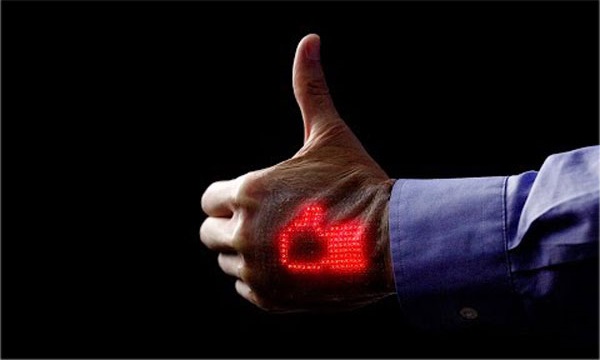
Electronic skin display reads electrocardiogram in real time or sends to the cloud.
Researchers of University of Tokyo’s Graduate School of Engineering in partnership with Dai Nippon Printing invented an elastic display which fits over the skin and able to show the waveform of an electrocardiogram. The wearable contains on-skin electrode sensor and the wireless communication module to transmit data to the cloud. The team wants to reduce the burden on patients and family members who utilize nursing care and improve the quality of life by upgrading the availability and accessibility of information.
Doctors are able to get the electrocardiograms on a screen in real time or the data can be storable to check the information later. Till now the device has the ability to improve the quality of information from patients that are elderly or otherwise unable to operate more difficult and intrusive devices. The patients which are taking self-care or home-care, for them the gadget provide significant information. It’s easier to obtain and comes with better accuracy.
The gadget turns a patient’s actual skin into a tiny screen that can broadcast their heartbeat, allowing medical professionals to get the result at the moment. The electronic skin made up of 16*24 cluster of micro LEDs, wired on a rubber sheet. It can be stretched by 45% of its original size, which makes it more actual like as a human skin.
"We learned that devices that can be worn for a week or longer for continuous monitoring were needed for practical use in medical and sports applications," says Professor Takao Someya at the University of Tokyo's Graduate School of Engineering whose research group had previously developed an on-skin patch that measured oxygen in the blood.
This can withstand among a host of electronic skin competitors because they claim it to be the most durable and also that not a single pixel failed in the matrix display when it was attached to and moving with the skin.
"It will become possible to monitor patients' vital signs without causing any stress or discomfort," says Someya about the future implications of the team's research. In addition to nursing care and medical applications, the new device promises to enable continuous, precise monitoring of athletes' physiological signals and bodily motion without impeding their training or performance.


Wow! I wonder when the display will be commercially available . . . .